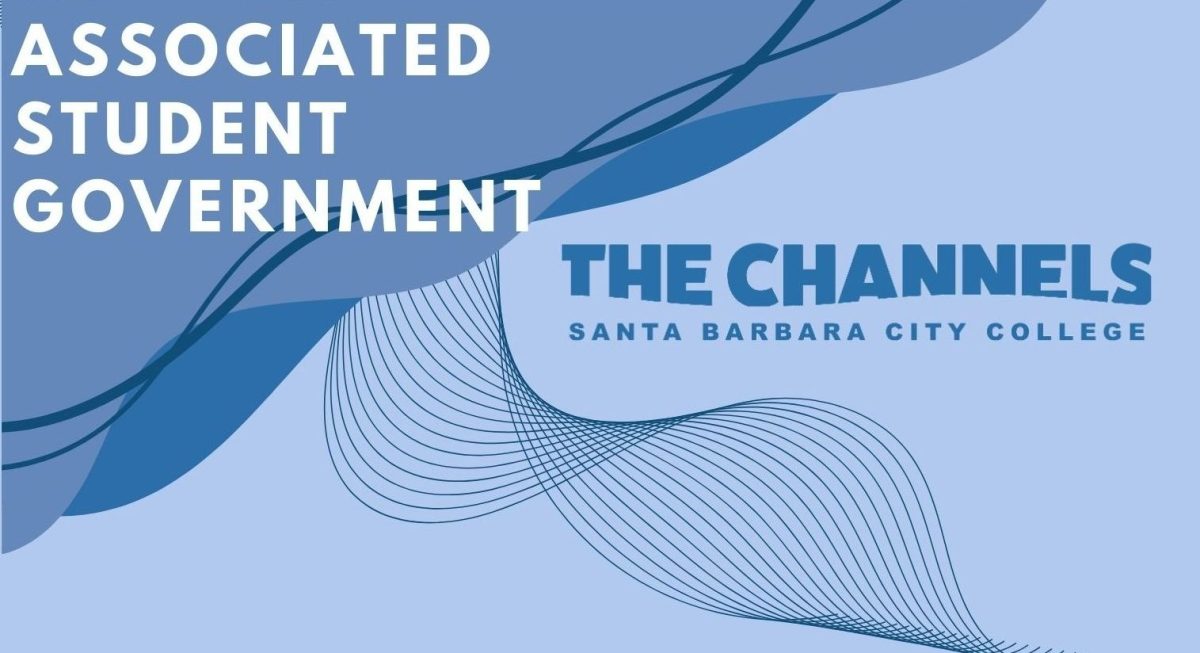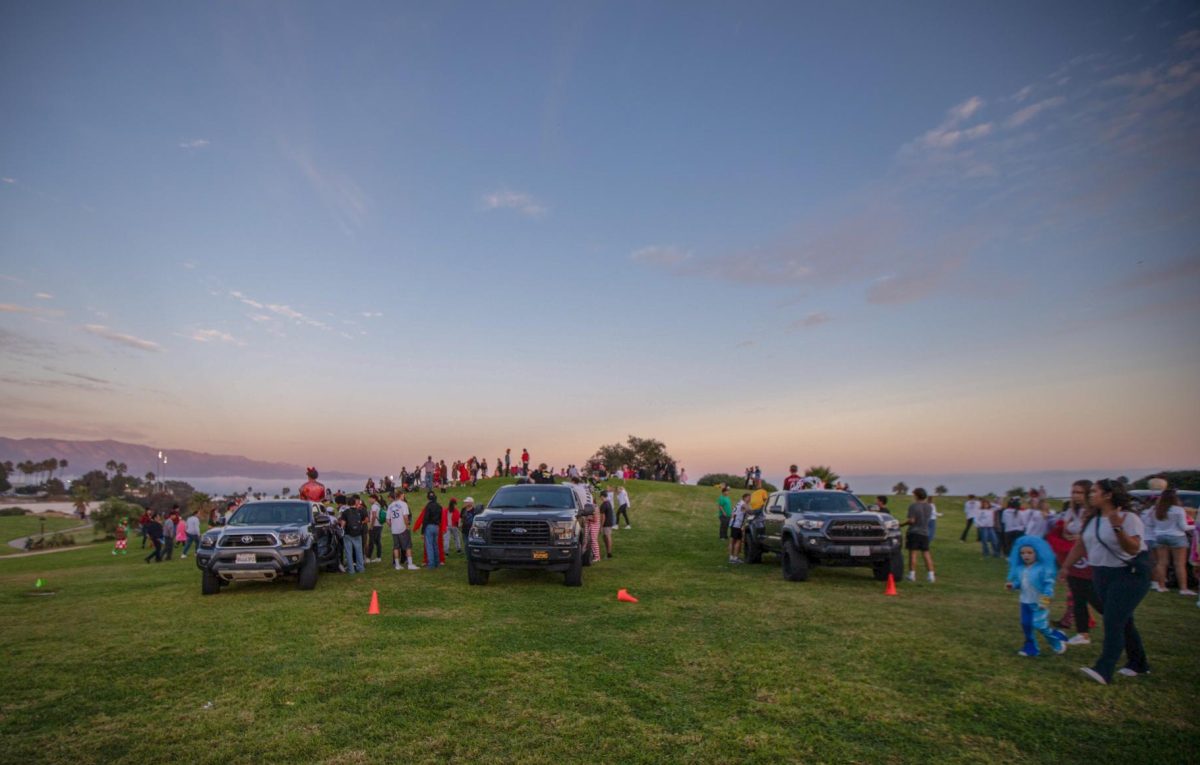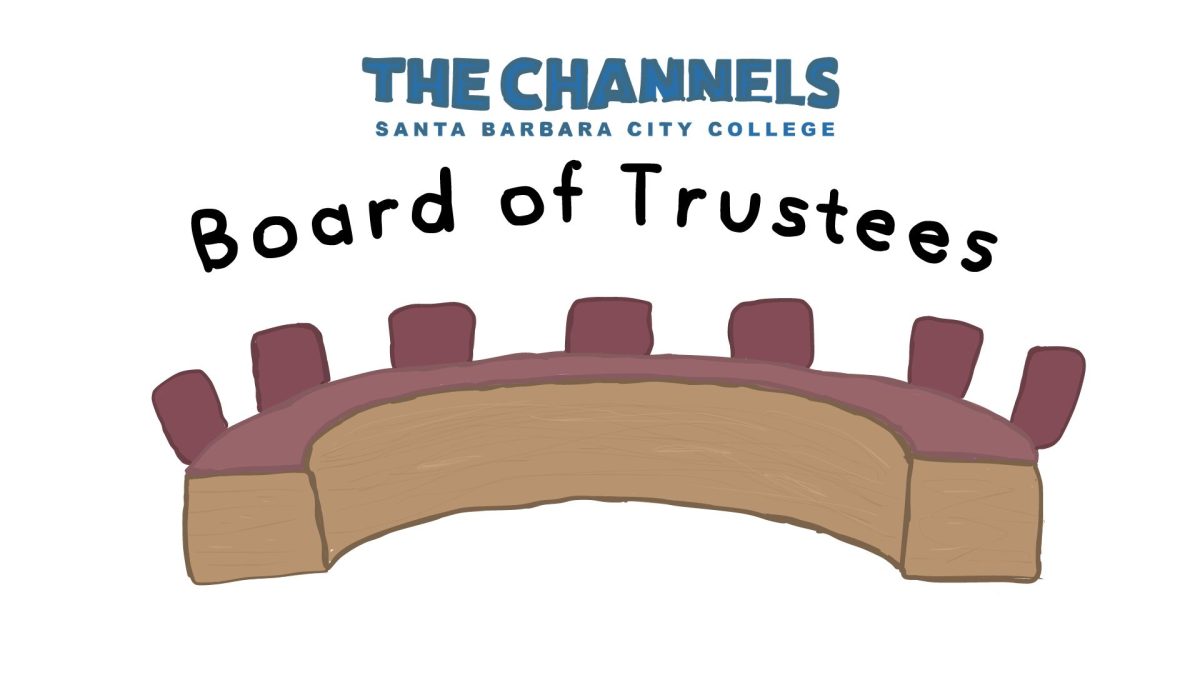The college is moving forward in turning the proposed Loma Alta parking structure from an idea into a reality.
The Board of Trustees approved a proposal Feb. 22 from Penfield & Smith, a local civil engineering firm, which will study the impact on traffic the six=-story lot would have on the surrounding intersections and streets.
The traffic report is part of the preliminary legwork required for the structure to undergo consideration by the California Coastal Commission (CCC), a state agency that regulates development along the coast and ensures public access to coastal areas.
If approved by the CCC and other agencies, the structure would sit next to the Sports Pavilion on Loma Alta Drive and would house 468 spaces. The cost of the proposed lot is currently estimated at $11.3 million and funding would come from the college’s own pockets.
College officials say the lot will help alleviate the college’s current parking problem and future traffic demands.
“The one thing I get complaints about pretty consistently is parking,” Superintendent-President John Romo said. “I would prefer not to build a structure, but we live in California; people drive their cars.”
Penfield & Smith’s first phase of the survey, which will cost $4,000, includes meeting with the city to plan how to conduct the study. The second phase will focus on tallying peak hour traffic flow around the campus.
This first report is only a small part of a larger, required package the CCC will need for review in order to approve the parking structure.
The college is currently preparing that packaged proposal for the CCC and still needs to conduct land studies and a study on the footbridge that connects West and East Campus to see if part of the bridge will need to be replaced to make room for the lot, said Joseph Sullivan, vice president of Business Services.
Sullivan said the college hopes to file the completed proposal with the CCC by this fall. After filing, the CCC will have 15 months to review and make a decision.
If approved, the college can then start drafting the designs for the project.
Contrary to previous reports, the CCC has not required the construction of the Loma Alta lot in order to approve the proposed School of Media Arts Building (SoMA). Instead, the CCC has mandated a Traffic Demand Management Plan (TDMP) for SoMA that included developing alternative transportation systems to lessen and mitigate car flow to the campus.
CCC Coastal Director James Johnson said the commission never formally mandated a structure to alleviate City College’s parking problem.
“It (the traffic plan) didn’t say it was going to be a structure,” Johnson told the Channels in a phone interview. “That’s for the campus [to decide].”
Sullivan said the proposed parking structure and the SoMA building are separate priorities.
Under their TDMP, City College has worked towards increasing bus lines, creating vanpools that travel from Ventura and Ojai and is proposing to pave over the bus turnaround on West Campus to produce 90 extra surface parking spaces.
However, Sullivan said other modes of transportation may not be viable replacements for driving.
“There’s a certain percentage of our population that will never be able to take the bus, ride a bike or walk because of their time constraints,” Sullivan said.
The main incentive behind the structure, Sullivan said, is to serve City College’s diverse student demographic.
“We’re different from the U.C.s and the state colleges in that we cater to the people of the community who have children, who have jobs,” Sullivan said. “The closer we can get them to class, the better we serve them.”
The structure will also satisfy future parking demands, which the college anticipates if enrollment continues to grow, Sullivan said. According to Sullivan, the number of students on campus has risen 1.44 percent over the last four years.
Increased bus rider-ship and waterfront parking passes have helped counter the on-campus parking demands that result from such growth, he said.
While the college moves forward on the lot, the feasibility and environmental impact of a parking structure continues to be challenged by those who contest the parking building.
Opponents of the structure contend that creating more parking spaces on campus would attract more cars and cause more traffic congestion on and around the campus, a argument that Sullivan said holds some merit.
Environmental studies professor Adam Green says more spaces may have the unintended effect of encouraging others to abandon alternative means and start driving to campus.
The real problem, Green said, is not parking spaces on campus, but too many cars.
“If we are actually going to solve the problem, we actually have to address the problem,” Green said. “By building a parking structure, we’re putting a Band-Aid on something.”
The lot would increase greenhouse gas emissions and pollutants that potentially could find its way into the ocean, Green added.
Green suggested that the college instead pay attention to creating sustainable transportation systems, not parking lots.
Philosophy professor and chair Joseph White, a vocal critic of the proposed structure, believes that the college has taken a passive approach to alternative methods and has not exhausted all the available opportunities.
“If we look at some more aggressive options, this problem might be readily resolvable without having to undergo all of that construction,” White said.
He suggested developing an all-day shuttle service that would pick up students and employees door-to-door within a five-mile radius of the campus-a service he calculated to cost $120,000 a year. The Board of Trustees approved basic design for the Loma Alta structure in Sept. 28, 2006 meeting.
The future of the structure hinges upon funding and the CCC’s character. Sullivan said that the CCC may have a different sentiment towards parking structures than they did in 2000, when the notion of the lot first came about.
“We are going to go forward as if we are building,” Sullivan said.







